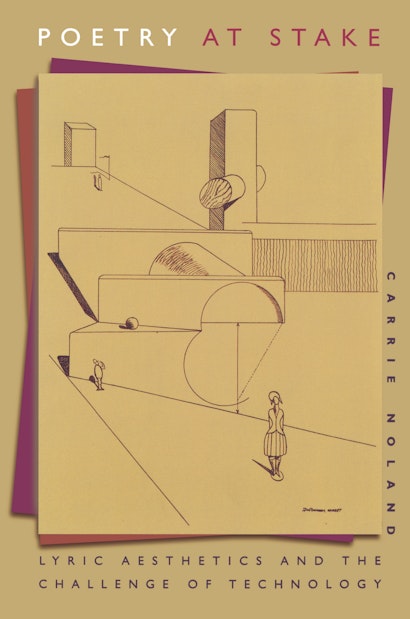Taking seriously Guillaume Apollinaire’s wager that twentieth-century poets would one day “mechanize” poetry as modern industry has mechanized the world, Carrie Noland explores poetic attempts to redefine the relationship between subjective expression and mechanical reproduction, high art and the world of things. Noland builds upon close readings to construct a tradition of diverse lyricists—from Arthur Rimbaud, Blaise Cendrars, and René Char to contemporary performance artists Laurie Anderson and Patti Smith—allied in their concern with the nature of subjectivity in an age of mechanical reproduction.
Carrie Noland is Associate Professor of French at the University of California, Irvine.
"Examining theoreticians . . . and adding an ingenious interpretive analyses of her own, Noland illustrates the extent to which and how the character of various poets, performers, and even a dress designer's productions mediate a dialectic between artist and public."—Choice
"Carrie Noland provides a powerful view of the dynamic connection between lyric poetry and technology. . . . It is invigorating to read such a well documented and providential analysis."—Susan F. Crampton, French Review
"Excellent in its informative reading of each artist in question, the chapters are independent, richly documented studies of the creative self and its embrace of a particular technology or commercial development."—Maria L. Assad, Nineteenth-Century French Studies
"By breaking down the ideological barrier segregating art objects from commodities, Noland's book will foster reconceptualization of the relationship between 'high' art and more popular forms of cultural expression and activity. It will help to decompose a current conservative critical doctrine, that the objects 'cultural studies' examines are somehow intrinsically inferior, subliterary, whereas only 'traditional' literary criticism deals appropriately with first-rank works."—Richard Terdiman, University of California, Santa Cruz
"Every chapter in this book is at once richly informative from a cultural and historical point of view and the purveyor of close textual readings that are as convincing as they are exciting. The book's trajectory is marked by meticulous research, acute readings of texts, and cogent argument."—Mary Lydon, University of Wisconsin, Madison

